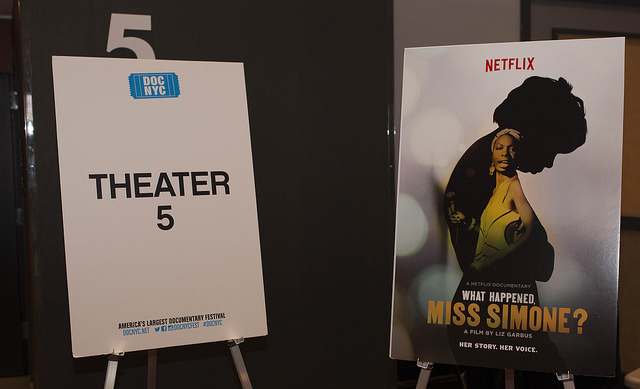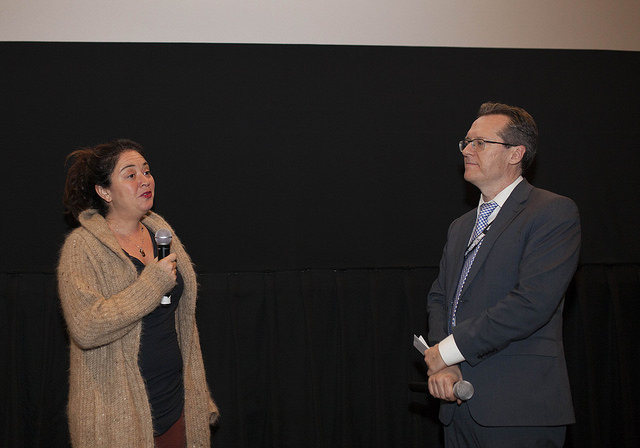Nina Simone, In Her Own Words Director Liz Garbus dissects the troubled life and legendary career of "The High Priestess of Soul"


Written by Susan Keyloun
“We will start from the beginning, which was about a little girl, and her name was Blue.” ~ Nina Simone in concert, 1968
Much has been written to describe Nina Simone, the “High Priestess of Soul” and iconic vocalist, elegiac lyricist, classically trained pianist and political activist of the 1960’s Civil Rights Movement. But not much of it has come from Simone’s own words. What Happened, Miss Simone? is a documentary borne from the inside out, gleaned from the perspective of Simone herself through interviews, journal entries, letters, concert recordings and the personal ephemera of this multifaceted artist.
During the pre-screening discussion at DOC NYC, Academy Award nominated director/producer Liz Garbus (whose work includes “Bobby Fischer Against the World” and collaborations with Susan Sarandon, Rosie Perez and Rory Kennedy), discussed the genesis of the project, her desire to tell Simone’s story, and her realization that Simone “was one of the great artists of the twentieth century who never got her due. I very much wanted this to be Nina’s story.” Thom Powers, DOC NYC’s artistic director, added that What Happened, Miss Simone? was the first film he and his team selected for the festival’s prestigious “Short List”, a special compilation of 15 standout films screened at the festival.
Born Eunice Waymon in Tryon, North Carolina, Simone’s original focus was to become the first black, female, classically trained pianist. At times she could be a kind of harridan who verbally scolded obstreperous audiences. But she ultimately found a purpose for the stage as a platform from which to express her own pain and the pain that sprung from the Civil Rights Movement. “When the civil-rights thing came up, all of a sudden I could let myself be heard about what I’d been feeling all the time,” Simone says in the film, asserting her personal collection to the political upheaval of the era.
Much of Simone’s pain was inflicted by her husband Andy Stroud, the main antagonist in her life’s story. A retired police sergeant, he married Simone in 1961, became her manager and ultimately, the nimbus of authority in her life. Stroud often discouraged Simone from her role on the political forefront, fueled in part by such protest songs as Mississippi Goddamn. The film shows Nina’s hand-written journal entries documenting years of abuse, and her struggle to ultimately rage against it to become free, a central theme in this film.
Lisa Stroud, Nina and Andy’s daughter, explained through interviews that her mother was “one of the greatest entertainers of all time hands down, but she paid a huge price (for that).” Ms. Stroud shared personal struggles including her own suicide contemplation, stating, “People seemed to think that when she went out on stage, that was when she became ‘Nina Simone.’ My mother was ‘Nina Simone’ 24/7, and THAT’S when it became a problem.
Perhaps Atallah Shabbaz, daughter of Malcom-X, most aptly answers the question posed in the film’s title with her own question: “Was Nina Simone allowed to be exactly who she was? As fragile as she was strong, as vulnerable as she was dynamic, she was African royalty. How does royalty stomp around in the mud and still walk with grace?”
Susan Keyloun has been published in New York Magazine, The New York Times, and DOCNYC blogs. She has also worked with DOCNYC as featured photographer.




